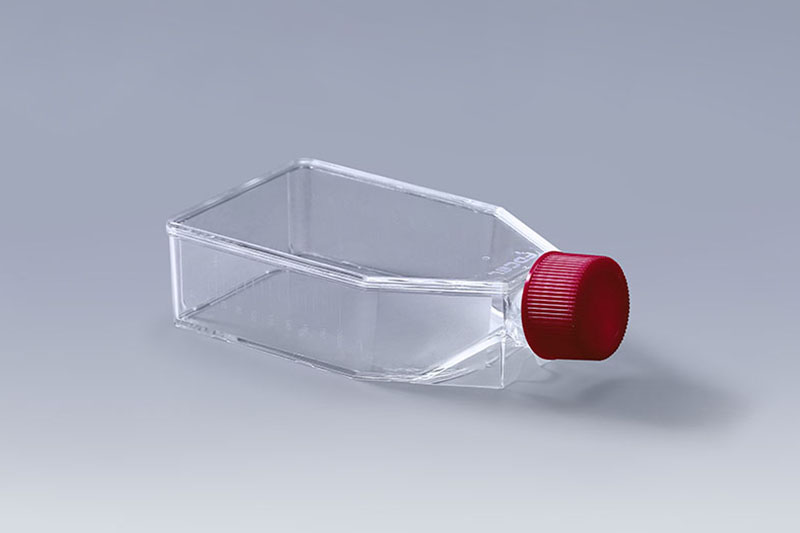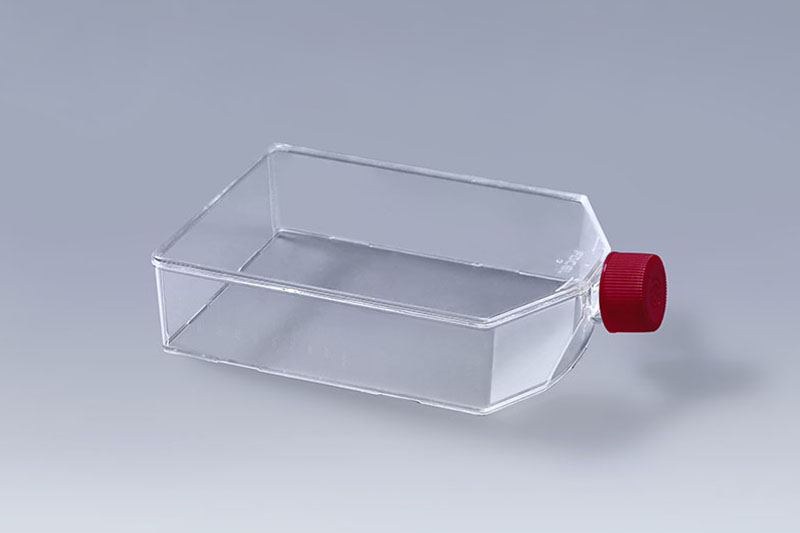Cell culture is a very difficult task, and any negligence in the small details of the operation may lead to the failure of the experiment. Cell culture flasks are a type of culture container that is frequently used, so what is the basic process?
First of all, pay attention to sterility. Regardless of which tube of liquid, try to close the lid as soon as possible after opening, and put the lid upwards. Do not pass over open containers when handling. In addition, it is best to place all kinds of things on the sterile table in a line, parallel to yourself. Try not to overlap front to back.
All consumable reagents used in cell manipulation are preferably cell culture specific. Generally, most of them are disposable consumables.
(1) Cell replacement:
Remove the original culture medium from the culture dish/bottle with a pipette or a pipette, and add new culture medium.
(2) Cell passage:
Before passaging, observe whether the cells are dense and whether they start to fuse. Generally, when the fusion reaches 70-80%, it can be passaged. It can also be passed on earlier.
In the case of adherent cells:
1) Remove the original culture solution from the Petri dish/bottle with a pipette tip or a pipette;
2) Wash with sterile PBS or sterile saline for 3 times (according to the culture volume);
3) Add an appropriate amount of trypsin to digest for an appropriate time (generally 0.25% trypsin; 9cm/10cm culture dish and 25cm culture bottle, add 1mL trypsin at a time. The digestion time depends on the cell type and other conditions. Generally, if it is a cell line , non-primary culture, digestion for 1-2 minutes is enough);
4) Pipet dozens of times with the tip of the pipette (depending on the cell type. Generally, the cell line is 30-50 times, and it usually takes about 2 minutes);
5) Add an appropriate volume of complete medium to stop trypsinization (if it is a 9cm/10cm culture dish and a 25cm culture bottle, you can add 1mL of complete medium; now there is 2mL of solution in the culture bottle (dish)).
6) The solution can now be divided into vials (2mL). If it is a cell line, divide it directly into two culture flasks (dishes). In the case of primary culture, the cells can be separated according to the digestion time; therefore, the solution (2mL) can be transferred to a new culture flask (dish).
7) Supplement two culture bottles (dishes) with complete culture medium to normal volume (if it is a 9cm/10cm culture dish and a 25cm culture bottle, it is 5mL complete culture medium)
8) Observe under the microscope. The cells that have just been passaged have not adhered to the wall, are suspended in the solution, and are round. Generally, it will adhere to the wall within 2 hours. If it has already adhered to the wall, it will have different shapes according to the cell type, but usually it is not round.
9) After the observation under the microscope is correct, put it into the cell culture incubator. Before putting the culture bottle (dish) into it, you can wipe it with disinfectant alcohol.
10) After subculture, it is best to change the cell medium once the next day. Of course, it can also depend on the situation.
The FAI climbed 5.9 percent year-on-year in the first 11 months of 2018, quickening from the 5.7-percent growth in Jan-Oct, the National Bureau of Statistics (NBS) said Friday in an online statement.
The key indicator of investment, dubbed a major growth driver, hit the bottom in August and has since started to rebound steadily.
In the face of emerging economic challenges home and abroad, China has stepped up efforts to stabilize investment, in particular rolling out measures to motivate private investors and channel funds into infrastructure.
Friday's data showed private investment, accounting for more than 60 percent of the total FAI, expanded by a brisk 8.7 percent.
NBS spokesperson Mao Shengyong said funds into weak economic links registered rapid increases as investment in environmental protection and agriculture jumped 42 percent and 12.5 percent respectively, much faster than the average.
In breakdown, investment in high-tech and equipment manufacturing remained vigorous with 16.1-percent and 11.6-percent increases respectively in the first 11 months. Infrastructure investment gained 3.7 percent, staying flat. Investment in property development rose 9.7 percent, also unchanged.
 English
English



















































 T75 Cell Culture Flasks
T75 Cell Culture Flasks T225 Cell Culture Flasks
T225 Cell Culture Flasks